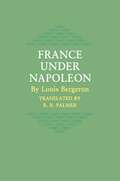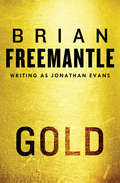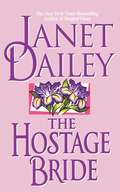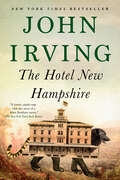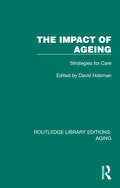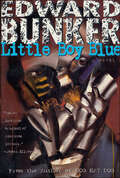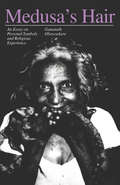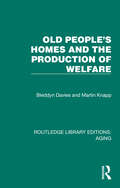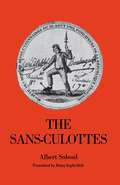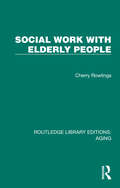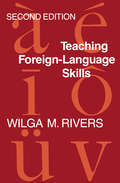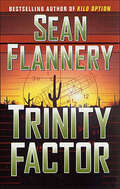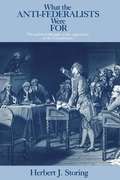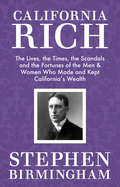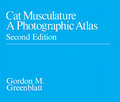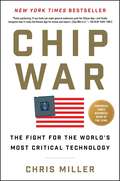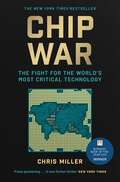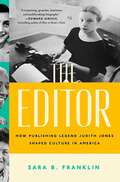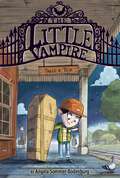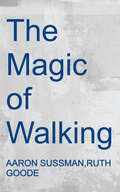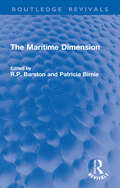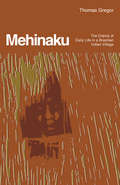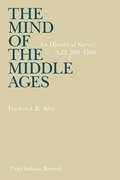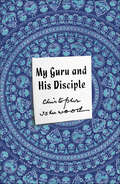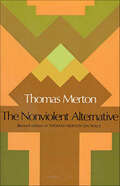- Table View
- List View
France under Napoleon
by Louis BergeronA classic social history of France in the Napoleonic period—now available in English to a new generation of readersPresented here is an English translation of a study that was part of a distinguished French series on the country's post-Revolution history. Unlike much Napoleonic literature that features the personality and foreign policy of the emperor, France under Napoleon describes the condition of France and the French people during the fifteen years immediately following their great revolution.Applying the methods of the new social history (Annales school), Louis Bergeron covers the political, administrative, social, economic, and cultural facets of the First Empire. He begins with the domestic program and institutions under Napoleon and the fervor of the new chief of state as he sought to establish a coherent, efficient, and thoroughly controlled regime. Bergeron then examines the opposition to his system and the reasons behind the imperfect realization of his ideal. It discusses population and demographic trends, social structure, and economic activity—all of which eluded Napoleon's grasp.
Gold
by Brian FreemantleA Saudi prince&’s grab for wealth plunges the world&’s superpowers into chaosAs the first in line for the Saudi throne, Prince Tefwik Hassan cannot afford public embarrassment. So when he loses his fortune in a failed scheme to corner the world&’s reserves of silver, Hassan is left scrambling. To recoup his millions, he devises an intricate plan that spans the globe and involves players from the upper echelons of both American and Soviet power: Hassan begins buying gold. The plan requires incredible international coordination, from the wood-paneled halls of London banks, to the arid fields of South Africa, to the frigid wastes of the Soviet Union. Every greedy man in the world wants a piece of Prince Hassan&’s plot, and when such dangerous men turn on each other, pandemonium ensues. This ebook features an illustrated biography of Brian Freemantle including rare photos from the author&’s personal collection.
The Hostage Bride
by Janet DaileyIn the first novel of the Brides trilogy, in which three unconventional young women vow they will never marry—only to be overtaken by destiny—outspoken Portia finds forever love. It’s bad enough that seventeen-year-old Portia Worth is taken in by her uncle, the marquis of Granville, after her father dies. As the bastard niece, Portia knows she can expect little beyond a roof over her head and a place at the table. But it truly adds insult to injury when the Granvilles’ archenemy, the outlaw Rufus Decatur, hatches a scheme to abduct the marquis’s daughter—only to kidnap Portia by accident. Portia, who possesses more than a streak of independence as well as a talent for resistance, does not take kindly to being abducted—mistakenly or otherwise. Decatur will soon find himself facing the challenge of his life, both on the battlefield and in the bedroom, as he contends with this misfit of a girl who has the audacity to believe herself the equal of any man.
The Hotel New Hampshire (Black Swan Ser.)
by John IrvingNow available in eBook for the first time in America—the New York Times bestselling saga of a most unusual family from the award-winning author of The World According to Garp.&“The first of my father&’s illusions was that bears could survive the life lived by human beings, and the second was that human beings could survive a life led in hotels.&” So says John Berry, son of a hapless dreamer, brother to a cadre of eccentric siblings, and chronicler of the lives lived, the loves experienced, the deaths met, and the myriad strange and wonderful times encountered by the family Berry. Hoteliers, pet-bear owners, friends of Freud (the animal trainer and vaudevillian, that is), and playthings of mad fate, they &“dream on&” in a funny, sad, outrageous, and moving novel by the remarkable author of A Prayer for Owen Meany and Last Night in Twisted River.
The Impact of Ageing: Strategies for Care (Routledge Library Editions: Aging)
by David HobmanAt the beginning of the 1980s, the previous few decades had been characterised by a ‘population explosion’ amongst the older age groups. Due to the success of medical science at prolonging life, this phenomenon had been experienced throughout both the developing and the developed world. Given the acute economic difficulties faced by the countries concerned, it was apparent that the allocation of resources, in terms of cash and care, would have to concentrate on the oldest and frailest members of the community.
Little Boy Blue: A Novel
by Edward BunkerRaised within the confines of a system that has done nothing but provide him with pain, Alex Hamilton's frustration and anger are completely natural--and inherently dangerous.Since his parents split up, Alex has been constantly running from foster homes and institutions, yearning to be with his father, a broken man who cannot give his son the home he desperately needs. The only constant in Alex's life is no-good, criminally-minded peers, who are all too ready to plant illegal ideas in an intelligent mind. Bunker writes, "His unique potential would develop into unique destructiveness."
Medusa's Hair: An Essay on Personal Symbols and Religious Experience
by Gananath ObeyesekereThe great pilgrimage center of southeastern Sri Lanka, Kataragama, has become in recent years the spiritual home of a new class of Hindu-Buddhist religious devotees. These ecstatic priests and priestesses invariably display long locks of matted hair, and they express their devotion to the gods through fire walking, tongue-piercing, hanging on hooks, and trance-induced prophesying. The increasing popularity of these ecstatics poses a challenge not only to orthodox Sinhala Buddhism (the official religion of Sri Lanka) but also, as Gananath Obeyesekere shows, to the traditional anthropological and psychoanalytic theories of symbolism. Focusing initially on one symbol, matted hair, Obeyesekere demonstrates that the conventional distinction between personal and cultural symbols is inadequate and naive. His detailed case studies of ecstatics show that there is always a reciprocity between the personal-psychological dimension of the symbol and its public, culturally sanctioned role. Medusa's Hair thus makes an important theoretical contribution both to the anthropology of individual experience and to the psychoanalytic understanding of culture. In its analyses of the symbolism of guilt, the adaptational and integrative significance of belief in spirits, and a host of related issues concerning possession states and religiosity, this book marks a provocative advance in psychological anthropology.
Old People's Homes and the Production of Welfare (Routledge Library Editions: Aging)
by Bleddyn Davies Martin KnappIn 1980 old people comprised over half the clients of Local Authority Social Services Departments and accounted for about half of their resources, yet until then residential care of the aged had been a backwater of both research and practice. During the 1970s a large research literature had developed on the subject, particularly in the United States. However, studies had been partial in their focus on issues, making no attempt to draw together their arguments to create a model that described and evaluated competing theories about what it is that determines the quality of residential life. Originally published in 1981, Bleddyn Davies and Martin Knapp filled that gap in this book.The authors discuss not only the theoretical arguments about residential care and the degree to which those theories had been verified by research, but also how far the factors considered to be important had been successfully measured, considering the choices to be made between alternative varieties of care that had grown up so rapidly in the previous five years. The authors conclude with an analysis of how their approach should contribute to the discussion of issues that was to be faced by British policy-makers in the 1980s as our welfare systems attempted to cope with the increasing numbers of the very old.
The Sans-Culottes: The Popular Movement and Revolutionary Government, 1793-1794
by Albert SoboulA riveting portrait of the radical and militant partisans who changed the course of the French RevolutionA phenomenon of the preindustrial age, the sans-culottes—master craftsmen, shopkeepers, small merchants, domestic servants—were as hostile to the ideas of capitalist bourgeoisie as they were to those of the ancien régime that was overthrown in the first years of the French Revolution. For half a decade, their movement exerted a powerful control over the central wards of Paris and other large commercial centers, changing the course of the revolution. Here is a detailed portrait of who these people were and a sympathetic account of their moment in history.
Social Work with Elderly People (Routledge Library Editions: Aging)
by Cherry RowlingsThe care of elderly people, particularly those who are frail, is a major task facing society. Originally published in 1981, this book considers the challenge of caring from a social work perspective. It locates social work with elderly people firmly within the mainstream of social work ethics, knowledge and skills, and demonstrates how work with the elderly both informs and in turn is informed by an understanding of work with other client groups.
Teaching Foreign Language Skills
by Wilga M. RiversSince its original publication in 1968, Rivers's comprehensive and practical text has become a standard reference for both student teachers and veteran instructors. All who wish to draw from the most recent thinking in the field will welcome this new edition. Methodology is appraised, followed up by discussions on such matters as keeping students of differing abilities active, evaluating textbooks, using language labs creatively, and preparing effective exercises and drills. The author ends each chapter of this new edition with questions for research and discussion—a useful classroom tool—and provides an up-to-date bibliography that facilitates further understanding of such matters as the bilingual classroom.
Trinity Factor
by Sean FlanneryThe Red Army was entering Berlin. The United States was defeating Japan in the Pacific, island by island. The Second World War was now all but over, so Stalin turned his eyes to what could be his next battleground, the heartland of America.Deep in the desert of New Mexico the first atomic bomb was exploding, at a site code-named Trinity. With this bomb, the Soviet Union would never stand a chance against the might of America. Exhausted from the long war against the Germans, a war the Red Army fought largely alone on the continent of Europe until D-Day in June 1944, Stalin sends in his best men to find out what the American scientists are up to.The wreckage of a German U-Boat found off of Cape Cod is the first false clue left by Alek and Jada as they move across the United States towards Trinity. Alek and Jada, they are lovers, they are killers, they are Soviet spies on a mission. They will become the Trinity Factor.At the Publisher's request, this title is being sold without Digital Rights Management Software (DRM) applied.
What the Anti-Federalists Were For: The Political Thought of the Opponents of the Constitution
by Herbert J. StoringThe Anti-Federalists, in Herbert J. Storing's view, are somewhat paradoxically entitled to be counted among the Founding Fathers and to share in the honor and study devoted to the founding. "If the foundations of the American polity was laid by the Federalists," he writes, "the Anti-Federalist reservations echo through American history; and it is in the dialogue, not merely in the Federalist victory, that the country's principles are to be discovered." It was largely through their efforts, he reminds us, that the Constitution was so quickly amended to include a bill of rights. Storing here offers a brilliant introduction to the thought and principles of the Anti-Federalists as they were understood by themselves and by other men and women of their time. His comprehensive exposition restores to our understanding the Anti-Federalist share in the founding its effect on some of the enduring themes and tensions of American political life. The concern with big government and infringement of personal liberty one finds in the writings of these neglected Founders strikes a remarkably timely note.
California Rich
by Stephen Birmingham&“[A] downright intriguing history . . . chronicling of the creation of the Californian Dream.&” —Los Angeles Times Since the Gold Rush, California has represented a land of opportunity for a special breed of American. Heading west in pursuit of sunshine, riches, and elusive dreams, the early mavericks of California set out to make their fortunes—and often succeeded beyond their wildest imaginations. Prospectors became oil tycoons, squatters became cattle barons, and farmers&’ wives became grandees of a new rough-hewn society. In California Rich, Stephen Birmingham explores this fascinating social history, showing how the ruling class of California was born and how it evolved a lifestyle that continues to fascinate the world. Its colorful array of characters include: the despotic media mogul William Randolph Hearst; governor and railroad baron Leland Stanford; and real estate magnate James Irvine, who attended business meetings with an entire pack of hunting dogs. In exploring how these self-made millionaires acquired their money—and what they did with it—Birmingham sheds light on the customs and quirks of California wealth, and how the state came to symbolize the easy, opulent life that still entices seekers of fame and fortune today.
Cat Musculature: A Photographic Atlas
by Gordon GreenblattThis series of brilliant photographs shows the dissection of the cat musculature. It is designed for use in conjunction with the third edition of Hyman's Comparative Vertebrate Anatomy, edited by Marvalee Wake, although it can be used with other textbooks. Every possible step has been taken to make the photographs easy to interpret and to follow. Reference indications to the Wake texts are included, and also concise data on the origin, insertion, and action of each muscle. The scale is such that in most cases no more than five muscles are shown per photograph, thus simplifying the task of visualizing the individual muscles. An invaluable aid for every student of cat anatomy.
Chip War: The Fight for the World's Most Critical Technology
by Chris MillerOne of Barack Obama&’s Favorite Books of 2023 The Financial Times Business Book of the Year, this epic account of the decades-long battle to control one of the world&’s most critical resources—microchip technology—with the United States and China increasingly in fierce competition is &“pulse quickening…a nonfiction thriller&” (The New York Times).You may be surprised to learn that microchips are the new oil—the scarce resource on which the modern world depends. Today, military, economic, and geopolitical power are built on a foundation of computer chips. Virtually everything—from missiles to microwaves—runs on chips, including cars, smartphones, the stock market, even the electric grid. Until recently, America designed and built the fastest chips and maintained its lead as the #1 superpower, but America&’s edge is in danger of slipping, undermined by players in Taiwan, Korea, and Europe taking over manufacturing. Now, as Chip War reveals, China, which spends more on chips than any other product, is pouring billions into a chip-building initiative to catch up to the US. At stake is America&’s military superiority and economic prosperity. Economic historian Chris Miller explains how the semiconductor came to play a critical role in modern life and how the US became dominant in chip design and manufacturing and applied this technology to military systems. America&’s victory in the Cold War and its global military dominance stems from its ability to harness computing power more effectively than any other power. Until recently, China had been catching up, aligning its chip-building ambitions with military modernization. Illuminating, timely, and fascinating, Chip War is &“an essential and engrossing landmark study" (London Times).
Chip War: The Fight for the World's Most Critical Technology
by Chris Miller***Winner of the 2022 Financial Times Business Book of the Year Award*** ***Selected as one of Barack Obama's Favourite Books of 2023***'Pulse quickening. A nonfiction thriller - equal parts The China Syndrome and Mission Impossible' New York Times An epic account of the decades-long battle to control the world's most critical resource—microchip technology Power in the modern world - military, economic, geopolitical - is built on a foundation of computer chips. America has maintained its lead as a superpower because it has dominated advances in computer chips and all the technology that chips have enabled. (Virtually everything runs on chips: cars, phones, the stock market, even the electric grid.) Now that edge is in danger of slipping, undermined by the naïve assumption that globalising the chip industry and letting players in Taiwan, Korea and Europe take over manufacturing serves America's interests. Currently, as Chip War reveals, China, which spends more on chips than any other product, is pouring billions into a chip-building Manhattan Project to catch up to the US. In Chip War economic historian Chris Miller recounts the fascinating sequence of events that led to the United States perfecting chip design, and how faster chips helped defeat the Soviet Union (by rendering the Russians&’ arsenal of precision-guided weapons obsolete). The battle to control this industry will shape our future. China spends more money importing chips than buying oil, and they are China's greatest external vulnerability as they are fundamentally reliant on foreign chips. But with 37 per cent of the global supply of chips being made in Taiwan, within easy range of Chinese missiles, the West's fear is that a solution may be close at hand. 'A riveting history. Features vivid accounts and colourful characters' Financial Times'Fascinating … A historian by training, Miller walks the reader through decades of semiconductor history – a subject that comes to life thanks to [his] use of colorful anecdotes' Forbes 'Indispensable' Niall Ferguson
The Editor: How Publishing Legend Judith Jones Shaped Culture in America
by Sara B. Franklin&“A surprising, granular, luminous, and path-breaking biography.&” —Edward Hirsch, critic and author of How to Read a Poem Legendary editor Judith Jones, the woman behind some of the most important authors of the 20th century—including Julia Child, Anne Frank, Edna Lewis, John Updike, and Sylvia Plath—finally gets her due in this intimate biography.When twenty-five-year-old Judith Jones began working as a secretary at Doubleday&’s Paris office in 1949, she spent most of her time wading through manuscripts in the slush pile and passing on projects—until one day, a book caught her eye. She read it in one sitting, then begged her boss to consider publishing it. A year later, Anne Frank: The Diary of a Young Girl became a bestseller. It was the start of a culture-defining career in publishing. During her more than fifty years as an editor at Knopf, Jones nurtured the careers of literary icons such as Sylvia Plath, Anne Tyler, and John Updike, and helped launched new genres and trends in literature. At the forefront of the cookbook revolution, she published the who&’s who of food writing: Edna Lewis, M.F.K. Fisher, Claudia Roden, Madhur Jaffrey, James Beard, and, most famously, Julia Child. Through her quiet and tenacious work behind the scenes, Jones helped turn these authors into household names, changing cultural mores and expectations along the way. Judith&’s work spanned decades of America&’s most dramatic cultural change—from the end of World War II through the Cold War, from the civil rights movement to the fight for women&’s equality—and the books she published acted as tools of quiet resistance. Now, her astonishing career is explored for the first time. Based on exclusive interviews, never-before-seen personal papers, and years of research, The Editor tells the riveting behind-the-scenes narrative of how stories are made, finally bringing to light the audacious life of one of our most influential tastemakers.
The Little Vampire Takes a Trip (The Little Vampire #3)
by Angela Sommer-BodenburgRudolph the little vampire tags along on Tony&’s family vacation in this spooky and funny third book in the classic middle grade Little Vampire series—perfect for readers who love Hotel Transylvania and The Addams Family!When his parents plan a vacation to a farm, Tony and his friend Rudolph the little vampire hatch a plan for Rudolph to come along to keep Tony company. Rudolph needs to have his coffin with him so he can sleep during the day, so he takes the train instead of flying. Can he make the trip without drawing too much attention to himself?
Magic of Walking
by Aaron Sussman Ruth GoodeA comprehensive guide to the joys of walking presents essential background information for planning and undertaking walking tours throughout the United States, the Virgin Islands, and Europe
The Maritime Dimension (Routledge Revivals)
by R. P. Barston Patricia BirnieFor land-locked and coastal states alike, the maritime dimension of national interests has increased dramatically in importance in recent years. Pressure on food and energy resources have coincided with an increase in the global population and insatiable demands for fish and minerals. Maritime conflict remains an ever-present possibility. Originally published in 1980, this book brings together in a single volume expert contributions on the central issues and areas of concern: The offshore exploration of oil and gas, fisheries, world shipping, the exploitation of deep seabed resources, marine pollution and contemporary maritime legal problems. The book outlines the problems, identifies conflicts and examines the variety of methods used by states to resolve them, including national and international laws and organisations, bilaterial and multilateral diplomacy and the increasing use of regional bodies. The Maritime Dimension will be of use to students and policy-makers in international law, environmental and energy studies and international relations.
Mehinaku: The Drama of Daily Life in a Brazilian Indian Village
by Thomas GregorThomas Gregor sees the Mehinaku Indians of central Brazil as performers of roles, engaged in an ongoing improvisational drama of community life. The layout of the village and the architecture of the houses make the community a natural theater in the round, rendering the villagers' actions highly visible and audible. Lacking privacy, the Mehinaku have become masters of stagecraft and impression management, enthusiastically publicizing their good citizenship while ingeniously covering up such embarrassments as extramarital affairs and theft.
The Mind of the Middle Ages: An Historical Survey
by Frederick B. Artz"This is the third edition of a near standard survey of the intellectual life of the age of faith. Artz on the arts, as on philosophy, politics and other aspects of culture, makes lively and informative reading."—The Washington Post
My Guru and His Disciple
by Christopher IsherwoodMy Guru and His Disciple is a sweetly modest and honest portrait of Isherwood's spiritual instructor, Swami Prabhavananda, the Hindu priest who guided Isherwood for some thirty years. It is also a book about the often amusing and sometimes painful counterpoint between worldliness and holiness in Isherwood's own life. Sexual sprees, all-night drinking bouts, a fast car ride with Greta Garbo, scriptwriting conferences at M-G-M, intellectual sparring sessions with Berthold Brecht alternated with nights of fasting at the Vedanta Center, a six-month period of celibacy and sobriety, and the pious drudgery of translating (in collaboration with the Swami) the Bhagavad-Gita. Seldom has a single man been owed with such strong drives toward both sensuality and spirituality, abandon and discipline; out of the passionate dialectic between these drives, My Guru and His Disciple has been written.
The Nonviolent Alternative
by Thomas MertonThe writings in this work were precipitated by a variety of events during the last decades of Merton's life - the civil rights and peace movements of the 1960s among them. His timeless moral integrity and tireless concern for nonviolent solutions to war are eloquently expressed.
